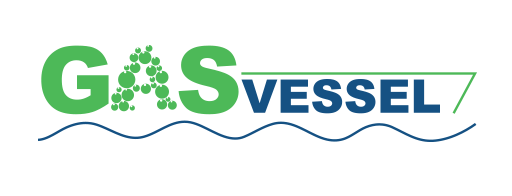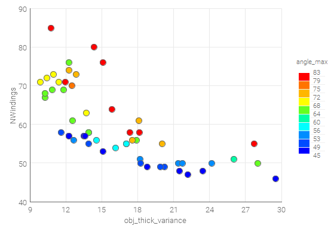Perfecting the manufacture of pressurized gas vessels


- Project partners: Gasvessel Consortium
- ESTECO Software Solution: modeFRONTIER
-
Benefits:Evaluate thousands of gas vessel designs in just a few daysVisualize and identify the best candidate designsReduce weight of the first gas vessel prototypes by 70%
Funded by the European Union, the GASVESSEL project aims to prove the techno-economic feasibility of a new transport concept for compressed natural gas (CNG). ESTECO, in partnership with other industrial organizations from the energy, Oil&Gas and naval engineering fields, has developed an innovative solution to manufacture pressure vessels that are considerably lighter than the current state-of-the-art alternatives. These super-light pressure vessels enable new ship designs that have much higher payloads and dramatically lower transportation costs per volume of gas.
"The optimization process makes gas vessels up to 70% lighter."
Challenge
Traditional pressure vessels normally used to transport liquified gas by ship cannot be used to transport CNG. This is because the relevant thickness of the ship walls required to maintain the operating pressure of 300 bar would add significant weight to the vessels, reducing their loading capacity. In fact, one of the main challenges addressed by the project is to produce lightweight pressure vessels for the transport of CNG using filament winding, which is a popular method suitable for manufacturing axisymmetric structures that are light and stiff. It involves the use of several layers of fiber-reinforced composite materials wrapped around a thin internal metal liner.

Solution
During the design phase, the material and geometrical parameters of the vessel (mainly related to the number and winding angle of the layers, the percentage of composite fibers and the liner’s mechanical properties) were considered for optimization to reduce the weight and costs while honoring the structural constraints. The winding process was physically modelled with CADWIND software to evaluate the distribution of composite layer thickness at each point of the vessel. The filament winding simulation model and the stress analysis of the vessel were then integrated in a modeFRONTIER workflow to evaluate the different solutions and choose the best designs. The optimization task, which aimed to maximize the uniformity of distribution of the winding layers and minimize their number while respecting the structural constraints of the vessel, was conducted using pilOPT, ESTECO proprietary autonomous algorithm.

Benefits
modeFRONTIER process automation and optimization capabilities enabled the engineers involved in the project to automatically evaluate thousands of gas vessel designs in just a few days, as opposed to losing weeks by doing it manually. The Bubble Chart allowed them to visualize and identify the best candidate designs among those with the lower weight and manufacturing costs. As a result, the first gas vessel prototypes, which weighed up to 70% less than the vessels not reinforced with filament winding, could be manufactured and have already been successfully tested.

The key to securing Europe’s energy supply is diversifying supply routes. This includes identifying and building new routes that unlock resources and decrease Europe’s dependence on a single supplier of natural gas and other energy resources. The GASVESSEL project opens up new possibilities to exploit stranded, associated and flared gas where this is currently economically not viable. It also creates new cost-efficient transport solutions by defining a novel offshore and onshore compressed natural gas (CNG) transportation system. gasvessel.eu


